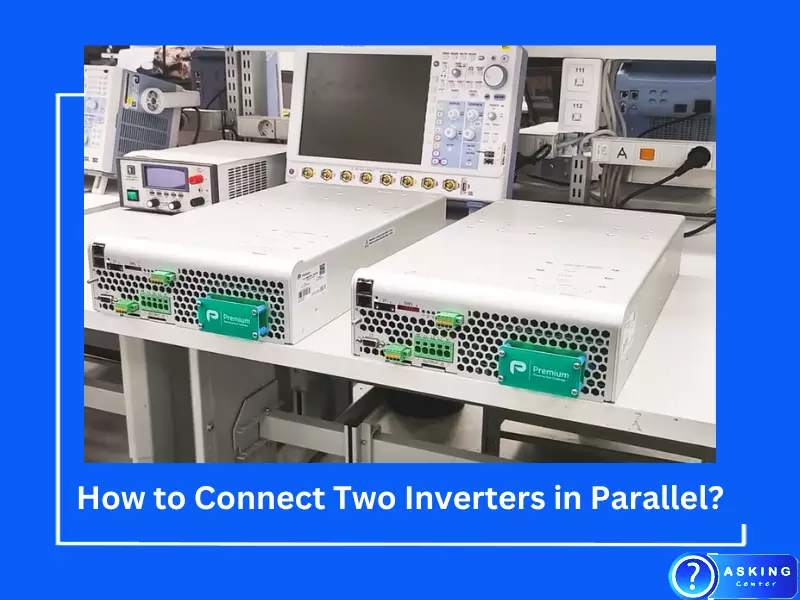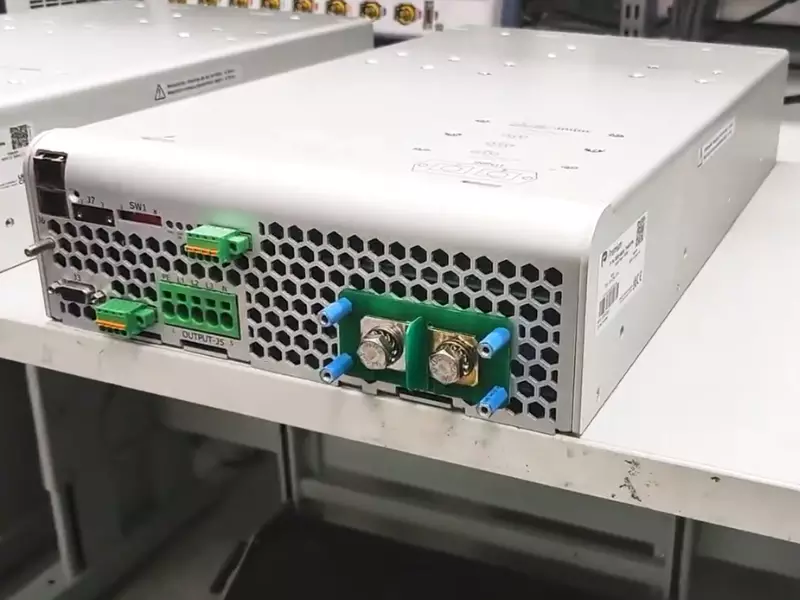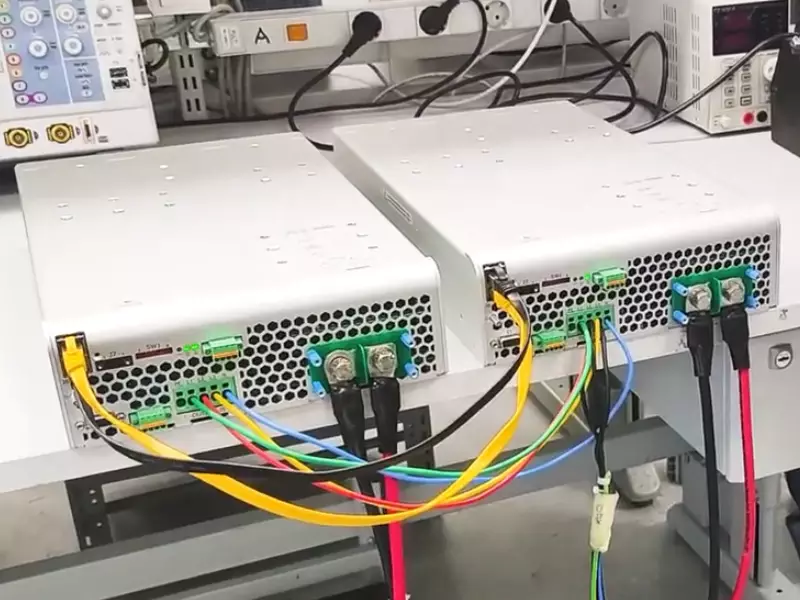The conversion of energy from one form to another is a fundamental process that enables modern technology. This energy transmutation is especially important in power systems where direct current (DC) power is converted into alternating current (AC) power. The heroes of this transformation are inverters, unsung components of many electrical systems that perform this essential function.
In essence, an inverter is a device that converts DC power into AC power, suitable for use in most home appliances and large-scale electrical systems. More interestingly, there are instances where connecting multiple inverters, especially in parallel, can provide numerous advantages like increased power output and backup power sourcing. This practice is common in power-demanding industries and even residential settings.
There’s a world of knowledge to unpack on this subject, full of useful insights that could potentially upgrade your understanding of inverters and their installation. Stay with us as we delve into the nitty-gritty of parallel inverter connections and explore examples, precautions, benefits, and challenges associated with this technique.
Inverter Function and Mechanism
An inverter is a pivotal device in many electrical systems, known for its ability to convert direct current (DC) power into alternating current (AC) power. This conversion is essential because many household appliances and large-scale electrical systems utilize AC power, not the DC power generated by sources like batteries or solar panels.

In simple terms, an inverter takes in DC power, which flows consistently in one direction, and transforms it into AC power, which periodically changes direction. It does so through electronic circuitry that flips the DC power back and forth, creating a waveform that emulates AC power.
Types of Inverters
The world of inverters is vast, with each type serving a unique purpose. The three most common types of inverters are standalone inverters, grid-tie inverters, and battery backup inverters.
Standalone Inverters
A standalone inverter draws its DC power from batteries charged by photovoltaic arrays, making it an excellent choice for off-grid solar power systems. They are independent systems that are not connected to the electrical grid.
Grid-tie Inverters
A grid-tie inverter connects directly to the power grid. It converts DC power generated by solar panels or other renewable energy sources into AC power, which it then feeds into the grid. The key advantage of this type of inverter is that excess power generated can be sold back to the utility, effectively making the meter spin backward.
Battery Backup Inverters
Battery backup inverters are specialized inverters that convert DC to AC power and also have the capability to charge a battery. They are connected to a battery bank and the power grid, providing power during a grid outage.
The Rise of Solar Power and the Role of Inverters
Solar Power Basics
Solar power systems generate energy by capturing sunlight with photovoltaic (PV) cells, commonly known as solar panels. These cells create DC power, which, as we’ve learned, is not readily usable by most appliances and must be converted into AC power. This conversion is where inverters step into the picture.
The Crucial Role of Inverters in Solar Power Generation
The energy generated by solar panels is in DC form, which is not directly usable by many household and industrial appliances that run on AC power. Thus, an inverter plays a pivotal role in a solar power system by converting the generated DC power into usable AC power.
In some cases, systems may require multiple inverters. This configuration, known as multiple inverter-based solar power generation systems, allows for enhanced power output, improved efficiency, and redundancy, ensuring the system remains operational even if one inverter fails.
Multiple Inverters: The Case of Two 5kW Inverters
Description of a 5kW Inverter
In a solar power system, a 5kW inverter is often the go-to choice for residential applications. It provides a suitable power output for most household needs, such as running appliances including air conditioning units, refrigerators, and entertainment systems.
Doubling Up with Two 5kW Inverters
However, for larger households or small businesses with high power demands, a single 5kW inverter may not suffice. This is where the concept of connecting two inverters in parallel comes into play. By connecting two 5kW inverters in parallel, you essentially double the power output.
Not only does this allow for greater power availability, but it also introduces redundancy into the system. If one inverter fails or requires maintenance, the other can continue supplying power, ensuring a steady power supply with minimal interruptions.
Understanding Inverter Lifespan
Factors Affecting Inverter Lifespan
Just like any other electronic device, an inverter’s lifespan is influenced by a variety of factors. These include the quality of manufacturing, the operating conditions it is exposed to, and how well it is maintained.
Quality of manufacturing is critical, as high-quality inverters are designed and built to withstand the demands of power conversion for extended periods. Operating conditions, such as environmental temperature and load demands, can also impact the lifespan. Finally, regular maintenance, such as cleaning and inspection for potential issues, helps ensure the inverter continues to operate effectively.

Tips to Prolong Inverter Lifespan
Ensuring a long lifespan for your inverter involves several best practices. These include:
- Proper Installation: Make sure the inverter is installed correctly, ideally by a professional. Poor installation can lead to premature failure.
- Regular Servicing: Have the inverter checked and serviced regularly to identify and address potential issues early.
- Using the Inverter Within Its Capacity: Overloading the inverter can cause excessive wear and tear, reducing its lifespan. Ensure your power demand does not exceed the inverter’s capacity.
Signs of Inverter End-of-Life and Replacement Strategies
As an inverter approaches its end of life, it may begin to show signs of reduced efficiency, such as frequent power disruptions or abnormal functioning. When these signs appear, it’s critical to replace the inverter to prevent damage to the connected appliances or the power system.
Selecting a suitable replacement involves considering factors such as the system’s power requirements, the type of power source (such as solar panels), and the available budget. You should also consider advancements in technology since the last purchase, as newer models often offer increased efficiency and additional features.
Unpacking the Concept of Parallel Connection
Defining Parallel Connection
In electrical terminology, a parallel connection refers to connecting two or more devices alongside each other, so each device has the same voltage across it. In the context of inverters, connecting two inverters in parallel implies that both inverters are connected to the same power source and load. This configuration effectively doubles the capacity of the system.
Parallel vs. Series Connection: A Comparison
Parallel connections should not be confused with series connections. In a series connection, devices are connected end-to-end, and the same current flows through each device. While series connections can increase the voltage, they do not increase the system’s overall capacity.
In contrast, parallel connections increase the total capacity of the system, as each device operates independently. Thus, if you’re looking to boost the overall power output of your system, connecting inverters in parallel is a suitable strategy.
Use Cases for Parallel Connection in Inverters
Parallel connections are particularly useful in power-intensive settings, where a single inverter might not provide adequate capacity. By connecting inverters in parallel, you can effectively increase the system’s capacity, ensuring sufficient power to meet high demands.
Additionally, a parallel connection offers the benefit of redundancy. In a multiple inverter setup, if one inverter fails, the other inverters can continue supplying power, preventing a total power outage. This redundancy is crucial in settings where a continuous power supply is critical.
Strategy for Solar Array Expansion
Starting with a Small Solar Array and Single Inverter
If you’re new to solar power, it might be prudent to start with a small solar array and a single inverter. This approach allows you to familiarize yourself with the system’s operation and maintenance and provides an understanding of your actual power needs. Over time, as your comfort level and possibly your power demands increase, you can consider adding more solar panels and inverters.
Expanding to Separate Solar Arrays and Multiple Inverters
Once you’re ready to scale up your solar power system, you can add more solar arrays and inverters. One popular strategy is to connect separate solar arrays to separate inverters. This setup not only increases the total power output but also offers redundancy.
In case one array or inverter fails or needs maintenance, the others can continue to supply power, maintaining the system’s reliability and consistency. Furthermore, if you have different arrays facing different directions or angles, separate inverters will ensure that each array operates at its maximum efficiency.
The expansion process should be guided by your power needs, budget, and space for installing additional panels. Always consult with a solar power professional to design and implement the most effective and efficient system for your unique situation.

Considerations for Parallel Inverter Connections
Capacity Matching
When connecting two inverters in parallel, it is crucial to ensure they have matching capacities. Mismatched capacities can lead to imbalances in power distribution, which can cause wear and tear or even damage to the inverters. Always refer to the manufacturer’s instructions and consult with a professional if you’re unsure about the compatibility of your inverters.
Synchronous Operation
Another critical aspect of parallel inverter connection is synchronous operation. The inverters should operate in sync, meaning they generate AC waves that coincide with each other. Non-synchronous operation can lead to a condition known as “fighting,” where the inverters work against each other, leading to potential damage.
Modern inverters often come equipped with features that ensure synchronous operation when connected in parallel, but it’s always important to check for this feature before proceeding.
Safety Precautions
Electrical safety is paramount when dealing with inverters and solar power systems. Before working on any part of the system, ensure all power sources are disconnected to prevent accidental shocks. Use only insulated tools and protective gear, and if you are in any doubt about the process, hire a professional electrician to ensure a safe and correct installation.
The Advantages of Parallel Inverter Connections
Connecting inverters in parallel offers several benefits, including:
Increased Capacity
Connecting inverters in parallel effectively doubles the power output. This increased capacity is beneficial in situations where there is a high demand for power, such as in large households, small businesses, or industrial settings.
Redundancy
Redundancy is another significant advantage of parallel inverter connections. If one inverter fails or needs maintenance, the other can continue to supply power, minimizing disruptions and ensuring a steady power supply.
Flexibility
With parallel connections, you have the flexibility to add more inverters as your power demands grow. This scalability makes it an excellent option for those who plan to expand their power system in the future.
The Challenges of Parallel Inverter Connections
While beneficial, parallel inverter connections do have some challenges:
Complexity of Installation
Connecting inverters in parallel can be complex and requires a good understanding of electrical systems. Incorrect installation can lead to imbalances, equipment damage, or even pose safety risks. It’s often best to involve a professional for installation.
Cost Implications
While parallel connections offer scalability, each additional inverter represents a significant cost. It’s essential to balance your power needs with your budget and consider the long-term savings and benefits of investing in additional inverters.
Conclusion
The parallel connection of inverters provides a powerful solution for those needing a high-capacity, flexible, and reliable power system. Though it might require a substantial initial investment and professional installation, the benefits of increased power output and redundancy often outweigh these challenges.
As with any significant electrical work, safety and due diligence are crucial. If you’re considering this setup, consulting with a solar power or electrical professional is highly recommended to design a system that best suits your unique power needs.
